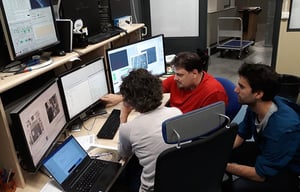Up to now it was known that Rembrandt had used typical colors and pigments of his era, the 17th century, such as several white lead-based pigments and organic materials (mainly linseed oil), but now it has been discovered that the magic is most probably due to an extremely rare ingredient, plumbonacrite (some traces of this material have only been found in a red pigment used by Van Gogh and in several 20th century paintings). Great was the surprise when it was discovered that at least three of Rembrandt’s paintings that were analyzed contained this substance, namely the Portrait of Marten Soolmans in the Rijksmuseum in Amsterdam, the Bathsheba in the Louvre in Paris, and the Susanna in the Mauritshuis in the Hague.
To achieve this result, experts took tiny samples less than 0.1mm in size, and analyzed them with the Synchroton, applying two different X-ray-based techniques. Hence, they were able to analyze the crystalline phases of the impasto (including the quantity thereof), reconstruct their morphology and size, and make accurate distribution maps, revealing the presence of the compound (a particular basic lead carbonate). According to the researchers, plumbonacrite was intentionally added by Rembrandt (in other words, it was not an accidental “contamination”), because this substance requires an alkaline “layer”, which must in turn be prepared and applied to the canvas.
This discovery must now be tested on other paintings of the painter and, for comparison, on the canvases of his contemporaries, starting with Vermeer. As the researchers suggest, in addition to a further step in the awareness of the history of this extraordinary artist and his way of painting, the identification of plumbonacrite could also be very useful in restoration work.

